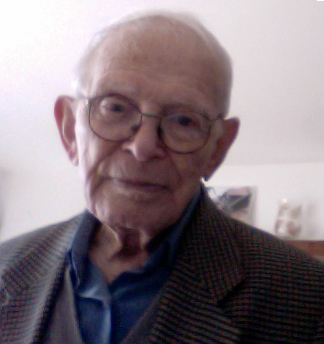|
Ebensee Concentration Camp
Ebensee was a subcamp of Mauthausen concentration camp established by the SS to build tunnels for armaments storage near the town of Ebensee, Austria, in 1943. The camp held a total of 27,278 male inmates from 1943 until 1945. Between 8,500 and 11,000 prisoners died in the camp, most from hunger or malnutrition. Political prisoners were most common, and prisoners came from many different countries. Conditions were poor, and along with the lack of food, exposure to cold weather and forced hard labor made survival difficult. American troops of the 80th Infantry Division liberated the camp on 6 May 1945. Residential homes now exist on the site of the camp, and a memorial cemetery is nearby. A memorial tunnel, created in 1994, and a Museum for Contemporary History Ebensee, created in 2001, provide information about the camp to visitors. Formation The construction of the Ebensee subcamp began late in 1943, and the first prisoners arrived on 18 November 1943 from the main camp of M ... [...More Info...] [...Related Items...] OR: [Wikipedia] [Google] [Baidu] |
DEST
German Earth and Stone Works (german: Deutsche Erd- und Steinwerke GmbH, ) was an SS-owned company created to procure and manufacture building materials for state construction projects in Nazi Germany. DEST was a subsidiary company of ''Amtsgruppe W'' (''Amt. W'') of SS Main Economic and Administrative Office (WVHA). Both ''Amt. W'' and the WVHA were headed by Waffen-SS generals Oswald Pohl and Georg Lörner. The headquarters for DEST was located in Sankt Georgen an der Gusen, a small town in Austria where Gusen II, a subcamp of Mauthausen, was built in 1944. History ''DEST'', founded on April 29, 1938, in Berlin, was administered by the ''VWHA'' for the purpose of procuring building materials and organizing slave labor and overseeing quarry operations. The Sachsenhausen (1936), Buchenwald (1937), Flossenbürg (1938), Mauthausen (1938), Natzweiler-Struthof (1939), Gross Rosen (1940) and Neuengamme (1940) concentration camp sites were chosen because of their proximity to soi ... [...More Info...] [...Related Items...] OR: [Wikipedia] [Google] [Baidu] |
Romani People
The Romani (also spelled Romany or Rromani , ), colloquially known as the Roma, are an Indo-Aryan ethnic group, traditionally nomadic itinerants. They live in Europe and Anatolia, and have diaspora populations located worldwide, with significant concentrations in the Americas. In the English language, the Romani people are widely known by the exonym Gypsies (or Gipsies), which is considered pejorative by many Romani people due to its connotations of illegality and irregularity as well as its historical use as a racial slur. For versions (some of which are cognates) of the word in many other languages (e.g., , , it, zingaro, , and ) this perception is either very small or non-existent. At the first World Romani Congress in 1971, its attendees unanimously voted to reject the use of all exonyms for the Romani people, including ''Gypsy'', due to their aforementioned negative and stereotypical connotations. Linguistic and genetic evidence suggests that the Roma originated ... [...More Info...] [...Related Items...] OR: [Wikipedia] [Google] [Baidu] |
Hatikvah
Hatikvah ( he, הַתִּקְוָה, haTīqvā, ; ) is the national anthem of the Israel, State of Israel. Part of 19th-century Jewish literature, Jewish poetry, the theme of the Romantic poetry, Romantic composition reflects the 2,000-year-old desire of the Jews, Jewish people to return to the Land of Israel and reclaim it as a free and sovereign nation (see Jewish state). The piece's lyrics are adapted from a work by Naftali Herz Imber, a Jewish poet from Zolochiv, Lviv Oblast#The Austro-Hungarian Imperial Period (1772–1918), Złoczów, Austrian Galicia. Imber wrote the first version of the poem in 1877, while he was hosted by a Jewish scholar in Iași, Iași, Romania. History The text of Hatikvah was written in 1878 by Naftali Herz Imber, a Jewish poet from Zolochiv, Lviv Oblast, Zolochiv ( pl, Złoczów, link=no, italic=no), a city nicknamed "The City of Poets", then in Austrian Poland, today in Ukraine. His words "Lashuv le'eretz avotenu" (to return to the land of our ... [...More Info...] [...Related Items...] OR: [Wikipedia] [Google] [Baidu] |
La Marseillaise
"La Marseillaise" is the national anthem of France. The song was written in 1792 by Claude Joseph Rouget de Lisle in Strasbourg after the declaration of war by France against Austria, and was originally titled "Chant de guerre pour l'Armée du Rhin" ("War Song for the Army of the Rhine"). The French National Convention adopted it as the Republic's anthem in 1795. The song acquired its nickname after being sung in Paris by volunteers from Marseille marching to the capital. The song is the first example of the "European march" anthemic style. The anthem's evocative melody and lyrics have led to its widespread use as a song of revolution and its incorporation into many pieces of classical and popular music. History As the French Revolution continued, the monarchies of Europe became concerned that revolutionary fervor would spread to their countries. The War of the First Coalition was an effort to stop the revolution, or at least contain it to France. Initially, the French arm ... [...More Info...] [...Related Items...] OR: [Wikipedia] [Google] [Baidu] |
Moshe Ha-Elion
Moshe Ha-Elion (26 February 1925 – 1 November 2022), also written Moshe Haelion, Moshe 'Ha-Elion, Moshé Ha-Elion, Moshé 'Ha-Elion, Moshé Haelyon, was a Holocaust survivor and writer. He survived Auschwitz, the death march, MauthausenMelk and Ebensee. He is the author of a memoir, מיצרי שאול (Meizarey Sheol), originally written in Hebrew and translated into English as ''The Straits of Hell: The chronicle of a Salonikan Jew in the Nazi extermination camps Auschwitz, Mauthausen, Melk, Ebensee''. He wrote three poems in Ladino based on his experience in the concentration camps and the death march: "La djovenika al lager", "Komo komian el pan", and "En marcha de la muerte", published in Ladino and Hebrew under the title ''En los Kampos de la Muerte''. Moshe Ha-Elion translated Homer's ''Odyssey'' into Ladino. He lived in Israel. He had two children, six grandchildren, and nine great-grandchildren. Biography: before deportation Moshe Ha-Elion was born in Thessaloniki, Gre ... [...More Info...] [...Related Items...] OR: [Wikipedia] [Google] [Baidu] |
J Malan Heslop
J Malan Heslop (18 June 1923 in Taylor, Weber County, Utah – 29 July 2011 Salt Lake City, Utah) was a World War II combat photographer with Arnold E. Samuelson's Combat Assignment Unit #123 of the 167th Signal Photographic Company who documented evidence of Nazi war crimes. He later served as editor of the ''Church News'' and managing editor of the ''Deseret News''. Heslop served as a freelance photographer in his native Utah and was employed at the Ogden Standard Examiner before setting off to California, where he studied the craft at Los Angeles City College. Early life J Malan Heslop was born on June 18, 1923, in Taylor, Utah. He was the oldest of three children of Jesse and Zella Malan Heslop. His family relocated to a farm in West Weber, Utah when he was three years old. Jesse Heslop encouraged and inspired J Malan Heslop's photography career. Using his father's camera, Heslop practiced taking photos and developing prints. He attended Weber High School where he par ... [...More Info...] [...Related Items...] OR: [Wikipedia] [Google] [Baidu] |
Refeeding Syndrome
Refeeding syndrome is a metabolic disturbance that occurs as a result of reinstitution of nutrition in people and animals who are starved, severely malnourished, or metabolically stressed because of severe illness. When too much food or liquid nutrition supplement is eaten during the initial four to seven days following a malnutrition event, the production of glycogen, fat and protein in cells may cause low serum concentrations of potassium, magnesium and phosphate. Cardiac, pulmonary and neurological symptoms can be signs of refeeding syndrome. The low serum minerals, if severe enough, can be fatal. Cause Any individual who has had a negligible nutrient intake for many consecutive days and/or is metabolically stressed from a critical illness or major surgery is at risk of refeeding syndrome. Refeeding syndrome usually occurs within four days of starting to re-feed. Patients can develop fluid and electrolyte imbalance, especially hypophosphatemia, along with neurologic, pulmonary, ... [...More Info...] [...Related Items...] OR: [Wikipedia] [Google] [Baidu] |
Gross-Rosen Concentration Camp
, known for = , location = , built by = , operated by = , commandant = , original use = , construction = , in operation = Summer of 1940 – 14 February 1945 , gas chambers = , prisoner type = mostly Jews, Poles and Soviet citizens , inmates = 125,000 (in estimated 100 subcamps) , killed = 40,000 , liberated by = , notable inmates = Boris Braun, Adam Dulęba, Franciszek Duszeńko, Heda Margolius Kovály, Władysław Ślebodziński, Simon Wiesenthal, Rabbi Shlomo Zev Zweigenhaft , notable books = , website = Gross-Rosen was a network of Nazi concentration camps built and operated by Nazi Germany during World War II. The main camp was located in the German village of Gross-Rosen, now the modern-day Rogoźnica in Lower Silesian Voivodeship, Poland; directly on the rail-line between the towns of Jawor (Jauer) and Strzegom (Striegau). ... [...More Info...] [...Related Items...] OR: [Wikipedia] [Google] [Baidu] |
Kapo (concentration Camp)
A kapo or prisoner functionary (german: Funktionshäftling) was a prisoner in a Nazi camp who was assigned by the ''Schutzstaffel'' (SS) guards to supervise forced labor or carry out administrative tasks. Also called "prisoner self-administration", the prisoner functionary system minimized costs by allowing camps to function with fewer SS personnel. The system was designed to turn victim against victim, as the prisoner functionaries were pitted against their fellow prisoners in order to maintain the favor of their SS overseers. If they neglected their duties, they would be demoted to ordinary prisoners and be subject to other kapos. Many prisoner functionaries were recruited from the ranks of violent criminal gangs rather than from the more numerous political, religious, and racial prisoners; such criminal convicts were known for their brutality toward other prisoners. This brutality was tolerated by the SS and was an integral part of the camp system. Prisoner functionaries wer ... [...More Info...] [...Related Items...] OR: [Wikipedia] [Google] [Baidu] |
Former Appelplatz At Ebensee With Survivors
A former is an object, such as a template, gauge or cutting die, which is used to form something such as a boat's hull. Typically, a former gives shape to a structure that may have complex curvature. A former may become an integral part of the finished structure, as in an aircraft fuselage, or it may be removable, being using in the construction process and then discarded or re-used. Aircraft formers Formers are used in the construction of aircraft fuselage, of which a typical fuselage has a series from the nose to the empennage, typically perpendicular to the longitudinal axis of the aircraft. The primary purpose of formers is to establish the shape of the fuselage and reduce the column length of stringers to prevent instability. Formers are typically attached to longerons, which support the skin of the aircraft. The "former-and-longeron" technique (also called stations and stringers) was adopted from boat construction, and was typical of light aircraft built until the ad ... [...More Info...] [...Related Items...] OR: [Wikipedia] [Google] [Baidu] |


.jpg)


.jpg)
